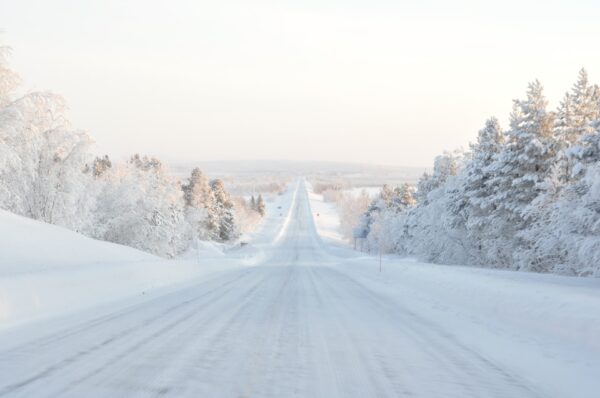
It’s that time of year again—when the roads get slippery, winter car accidents happen. People slide off the roads, get hit from behind, or, unfortunately, sideswiped or strike a pedestrian. Even for the most ‘seasoned’ drivers, driving in wintry weather, snowstorm, or across black ice can be challenging. If a car slides across the road and hits another vehicle that hits yours, beyond tending to the accident’s immediate consequences if there are injured parties, knowing what to do in the aftermath is important.
Where the issues of liability and fault come into play, to ensure the best possible outcome of a bad situation, it’s essential to know where you stand concerning the law and what to do.
Determining Fault in a Winter Car Accident
Determining fault when accidents occur in winter weather conditions can lead to confusion. After all, accidents in snowy conditions or black ice can involve more than one vehicle, if not several, along with injuries to passengers. Sorting through the mess, literally and figuratively, means sorting through auto policies and conducting several investigations. If another car slid into the back of yours, that driver’s liability coverage would pay for damages.
The fact is, determining who is at fault in a car accident caused by an icy stretch of road or a snowstorm is no different than determining fault during the middle of the summer. Whenever you choose to drive, you are responsible for getting behind the wheel, no matter the season or the weather. Weather cannot be blamed for an accident, and, undoubtedly, Maine drivers know the risks associated with driving in winter weather.
In rare instances, a municipality or county may be held liable if a section of road was poorly maintained or designed and was found to cause winter accidents. An unexpected weather event such as a snow squall or other unforeseen circumstances may be taken into consideration when assigning a share of the blame. Nevertheless, under the laws of negligence, every driver must act with reasonable care when on the roadways.
A driver can be held liable if he or she is found to be driving unreasonably or dangerously any time of the year. This is particularly true in winter. In winter conditions, failure to adjust your driving in response to the weather would not be considered reasonable in court. A reasonable person would drive slower in a snowstorm, would follow cars at a greater length, and in fact, would know if they had the experience to drive safely during a winter storm. If a driver fails to adjust to poor weather conditions, they will be held liable.
When it comes to assigning car accident liability, Maine has an ‘at-fault’ system whereby the driver who causes an accident must use their insurance to pay damages and cover costs to the other driver. Be aware that Maine’s at-fault system has a catch. It’s known as a ‘modified comparative negligence’ rule, which means drivers can share ‘ fault.’
This is where it gets confusing. Based on evidence gathered at the scene, one driver maybe 30% responsible for an accident while the other driver could be 70% responsible. More than merely sharing fault, if a driver is more than 50% at fault, that driver cannot collect any damages from the other driver. On the other hand, if the driver’s less than 50% at fault, that driver collects damages minus the percentage that he or she is at fault. In this example, 30% at fault means the driver can collect 70% for damages after the crash.
Get in the Habit of Driving Defensively
Winter driving can be dangerous. Snowy weather and black ice can lead to treacherously slippery road conditions. All drivers should be wary of bridges and overpasses anytime during the winter months. On elevated surfaces, temperatures drop more rapidly than roads warmed by the sun’s radiant heating. Black ice can also be present along shadowy stretches of tree-lined roads throughout the day. Above all, in snowy, icy road conditions, practice good defensive driving habits:
- Drive slower.
- Increase following distance behind cars.
- Tap your brakes when slowing.
- Make sure your headlights are on, that your tires are not worn or bald.
- Never use cruise control.
Finally, if you have to be somewhere to be, leave early; if you have nowhere important to be, avoid driving altogether and stay home.

